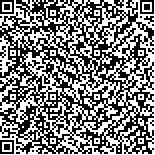窦佳鸣,李春光,眭演祥,等.重复经颅磁刺激对脑卒中后上肢功能影响的近红外脑功能成像研究[J].中华物理医学与康复杂志,2019,41(6):418-423
扫码阅读全文

|
| 重复经颅磁刺激对脑卒中后上肢功能影响的近红外脑功能成像研究 |
|
| |
| DOI:DOI:10.3760/cma.j.issn.0254-1424.2019.06.005 |
| 中文关键词: 近红外脑功能成像技术 经颅磁刺激 脑卒中 上肢运动功能 大脑皮质激活 |
| 英文关键词: Near-infrared spectroscopy Transcranial magnetic stimulation Stroke Upper limb function Cortical activation |
| 基金项目:脑肌多源信息运动融合感知与交互控制技术及康复机器人应用验证国家863高科技项目(2015AA042301) |
|
| 摘要点击次数: 6066 |
| 全文下载次数: 6882 |
| 中文摘要: |
| 目的 在近红外脑功能成像技术(fNIRS)监测下,观察脑卒中患者重复经颅磁刺激(rTMS)治疗前后患侧上肢运动时大脑皮质激活模式的变化。 方法 选取脑卒中患者30例,按照随机数字表法将其分为两组,治疗组和对照组,每组15例。治疗组给予21 d、频率1 Hz的rTMS治疗,部位为健侧半球的M1区,对照组给予假刺激。两组患者给予同样的基础治疗,分别在治疗前、治疗7 d、14 d、21 d 4个时间点,使用Fugl-Meyer上肢运动功能评分评价患者上肢运动功能。在两组患者治疗前后利用fNIRS检测大脑皮质6个感兴趣区(ROI)的氧合血红蛋白值(HbO2)。6个ROI区分别是患侧半球和健侧半球的运动前区(PMC)、辅助运动区(SMA)和感觉运动区(SMC)。 结果 治疗前,两组患者Fugl-Meyer上肢运动功能量表评分比较,差异无统计学意义(P>0.05)。与组内治疗前、组内治疗7 d比较,两组患者治疗14 d、21 d的Fugl-Meyer上肢运动功能量表评分显著增加(P<0.05)。与组内治疗14 d比较,两组患者治疗21 d的Fugl-Meyer上肢运动功能量表评分显著增加(P<0.05)。与对照组同时间点比较,治疗组治疗14 d[(26.67±3.18)分]、21 d[(36.67±5.30)分]的Fugl-Meyer上肢运动功能量表评分较高,差异有统计学意义(P<0.05)。治疗前,与同组同时间点其他ROI区比较,治疗组[(0.003 049±0.000 662)mmol×mm]和对照组[(0.003 201±0.000 834)mmol×mm]健侧SMC区HbO2较其他ROI区HbO2高(P<0.05)。与组内治疗前同ROI区比较,治疗组治疗21 d健侧SMC区[(0.001 125±0.000 232)mmol×mm]HbO2降低(P<0.05)。与对照组治疗21 d同ROI区比较,治疗组健侧SMC区HbO2较低(P<0.05)。 结论 早期脑卒中患者健侧半球行rTMS抑制性序列治疗21 d,可降低患侧上肢运动期间健侧半球SMC区皮质激活,促进上肢运动功能的恢复。 |
| 英文摘要: |
| Objective To explore any changes in the patterns of cortical activation after repetitive transcranial magnetic stimulation (rTMS) using functional near-infrared spectroscopy when rTMS is used to treat paralyzed upper limbs. Methods Thirty hemiplegic stroke survivors were randomly divided into a treatment group and a control group, each of 15. Those in the treatment group received 1 Hz rTMS on the M1 area of the unaffected hemisphere for 21 days, while the control group was given sham stimulation. The Fugl-Meyer motor assessment (FMA-UE) was used to assess the paralyzed upper limbs before the treatment and after 7, 14 and 21 days of treatment. Oxy-hemoglobin (HbO2) levels were measured in the premotor cortex, the supplementary motor area and the sensorimotor areas (SMCs) of the affected and unaffected hemispheres before and after the treatment using the functional near-infrared spectroscopy. Results Before the treatment there was no significant difference between the two groups in their average FMA-UE scores. The average FMA-UE scores of both groups increased significantly after 14 and 21 days of treatment, with the average scores at 21 days significantly better than after 14 days for both groups. But after 14 and 21 days the treatment group′s average score was significantly better than that of the control group. The average HbO2 level in the SMC area of the unaffected hemisphere in the treatment group had decreased significantly after 21 days of treatment, and it was then significantly lower than the same level in the control group. Conclusion Twenty-one days of rTMS of the unaffected hemisphere can decrease cortical activation in the unaffected SMC area and promote the recovery of upper limb function. |
|
查看全文
查看/发表评论 下载PDF阅读器 |
| 关闭 |